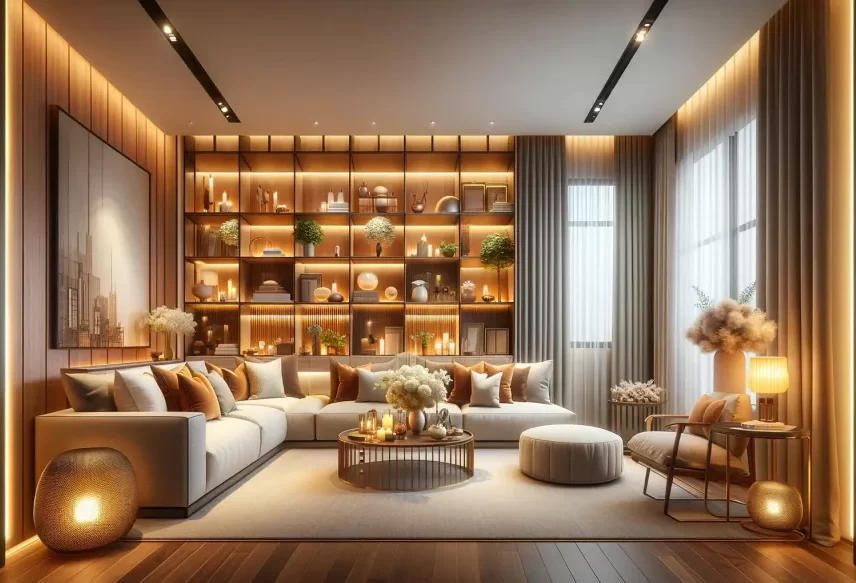Discover a treasure trove of valuable interior design tips and insights. Learn the fundamentals of interior design, including key elements that contribute to a cohesive and stylish space. Dive into a world of free, inspiring resources to help you transform your home with creative ideas and practical solutions. Whether you’re looking to refresh a single room or overhaul your entire space, find every piece of inspiration you’ll need to create a stunning and personalized environment.
How does interior design work?
Interior design is all about crafting spaces that are both functional and visually appealing. It’s a creative process that combines art, science, and practicality to enhance the way people experience an environment. Here’s how it typically works:
- Understanding the Client’s Needs: The designer begins by discussing with the client to understand their goals, preferences, budget, and lifestyle requirements.
- Concept Development: This phase involves creating a vision for the space. It could include mood boards, sketches, or digital renderings to communicate ideas effectively.
- Space Planning: Designers analyze the layout to ensure the space is used efficiently, taking into account furniture placement, lighting, and overall flow.
- Color and Material Selection: Choosing a palette, textures, and materials that align with the concept and suit the functionality of the space is crucial.
- Furniture and Decor: Designers select pieces that complement the overall theme, keeping comfort, style, and usability in mind.
- Lighting Design: Lighting plays a pivotal role in setting the mood and highlighting key features of the space.
- Implementation: The final stage involves coordinating with contractors, suppliers, and installers to bring the vision to life.
Interior design is more than just decoration; it’s about creating spaces that resonate with the people using them. Whether it’s a cozy living room or a sleek office, the designer ensures every element serves a purpose while adding aesthetic value.
What is interior design?
Interior design is a multifaceted profession that combines creativity, functionality, and technical skills to enhance the aesthetics and usability of interior spaces. It involves the planning, designing, and execution of environments within a building to achieve a balanced and pleasing atmosphere. Here’s a comprehensive overview:
Core Elements of Interior Design:
- Space Planning:
- Layout: Arranging furniture and elements to optimize the flow and functionality of a space.
- Zoning: Dividing areas for specific uses, such as living, dining, and working zones.
- Aesthetics:
- Color Theory: Selecting color schemes that influence mood and perception.
- Textures and Materials: Combining various textures and materials for visual and tactile appeal.
- Lighting Design: Using natural and artificial lighting to enhance ambiance and functionality.
- Functionality:
- Ergonomics: Designing for comfort and usability, considering human dimensions and behavior.
- Storage Solutions: Creating efficient and stylish storage options to declutter spaces.
- Style and Theme:
- Design Styles: Incorporating various styles such as contemporary, traditional, modern, industrial, or eclectic.
- Themes: Developing a cohesive look or theme that reflects the client’s personality or purpose of the space.
- Furnishings and Decor:
- Furniture Selection: Choosing pieces that fit both the functional needs and aesthetic preferences.
- Decorative Elements: Adding items like art, rugs, curtains, and accessories to complete the look.
- Color and Pattern:
- Color Schemes: Develop palettes that complement the space and create desired effects.
- Patterns: Integrating patterns in textiles, wallpapers, and other surfaces for visual interest.
- Architectural Elements:
- Ceilings and Walls: Designing features like moldings, wall panels, and ceiling treatments.
- Flooring: Selecting flooring materials and designs that suit the space and style.
- Sustainability:
- Eco-Friendly Materials: Choosing sustainable and environmentally friendly materials and practices.
- Energy Efficiency: Incorporating energy-efficient lighting and appliances.
- Technical Skills:
- CAD Software: Using computer-aided design tools to create detailed floor plans and renderings.
- Building Codes: Understanding and applying building regulations and standards.
- Client Collaboration:
- Needs Assessment: Working with clients to understand their needs, preferences, and lifestyle.
- Budget Management: Designing within the client’s budget while achieving their vision.
- Project Management:
- Timeline: Planning and managing the project timeline from conception to completion.
- Coordination: Collaborating with contractors, architects, and suppliers to ensure the design is executed correctly.
- Cultural and Historical Context:
- Historical Influence: Incorporating elements that reflect historical or cultural significance.
- Cultural Sensitivity: Designing spaces that respect and reflect diverse cultural backgrounds.
The Role of an Interior Designer:
- Problem-Solving: Identifying and addressing design challenges to create functional solutions.
- Creativity: Bringing innovative and unique ideas to transform spaces.
- Communication: Engaging with clients to understand their vision and preferences, and presenting design concepts clearly.
- Attention to Detail: Ensuring every aspect of the design aligns with the overall vision and quality standards.
Interior design is an art and science dedicated to creating spaces that are not only visually appealing but also functional and suited to the needs of the occupants. It requires a blend of creativity, technical knowledge, and practical skills to bring environments to life.
